
Vibrant and expressive, color tattoos have become a significant form of artistic expression and personal storytelling. With a rich history and diverse meanings across cultures, color tattoos continue to captivate individuals worldwide.
The art of tattooing has evolved significantly over the centuries, with color ink playing a crucial role in modern tattoo designs. The interaction between tattoo ink and skin is vital in creating lasting, visually appealing tattoos.
As you consider getting a color tattoo, understanding the significance of different colors and their meanings can help you make informed decisions about your design. Whether you’re drawn to bold, bright hues or subtle, pastel shades, this guide will explore the world of color tattoos and provide inspiration for your next tattoo.
Key Takeaways
- Color tattoos offer a wide range of creative possibilities and personal expression.
- Understanding the relationship between tattoo ink and skin is crucial for a successful tattoo.
- Different colors carry various symbolic meanings across cultures and tattoo traditions.
- Color adds dimension and personality to tattoo art, allowing for more detailed designs.
- Proper aftercare is essential for maintaining the vibrancy and longevity of your color tattoo.
The Evolution of Color in Tattoo Art
Color tattooing has a rich history that spans centuries, evolving from simple monochromatic designs to complex, vibrant artworks. The journey of color in tattoo art is a story of innovation and artistic expression.
Historical Origins of Color Tattoos
The introduction of colored pigments to tattooing began in ancient Japan in the 1600s, revolutionizing what had previously been a monochromatic art form. This marked the beginning of a new era in tattoo art, as artists started experimenting with various ink colors. Centuries later, Western countries like the United States and the United Kingdom adopted color tattoo techniques, incorporating blue, yellow, green, and red into their designs.
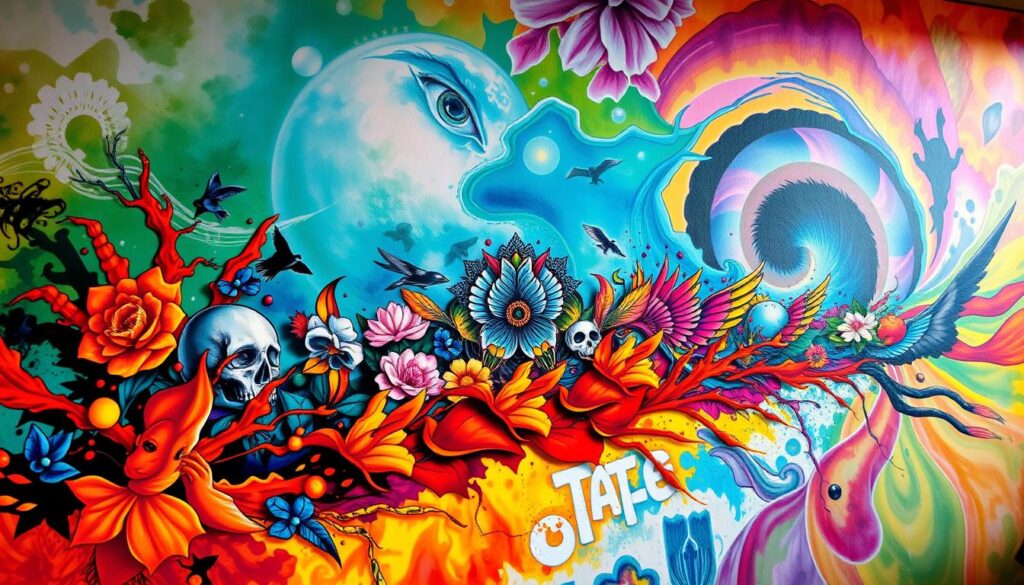
Modern Advancements in Tattoo Ink Technology
The evolution of tattoo ink technology has dramatically improved over recent years. Modern formulations offer greater safety, vibrancy, and longevity. For more information on the latest trends and designs, you can visit https://nailcutandink.com/colorful-tattoos/. Today’s tattoo inks benefit from scientific advancements that have reduced allergic reactions and improved color retention. The development of specialized tattoo ink colors has enabled artists to create increasingly complex and realistic designs, expanding the artistic possibilities of tattooing.
Understanding this evolution helps appreciate both the traditional foundations and cutting-edge innovations in contemporary color tattooing. As the art form continues to evolve, the role of color in tattoo art is likely to become even more prominent.
Understanding Color Tattoo Symbolism
In the realm of tattoo art, colors are more than just hues; they convey powerful symbolic messages. The symbolism behind color tattoos is complex, influenced by a mix of cultural traditions, personal experiences, and artistic expression.
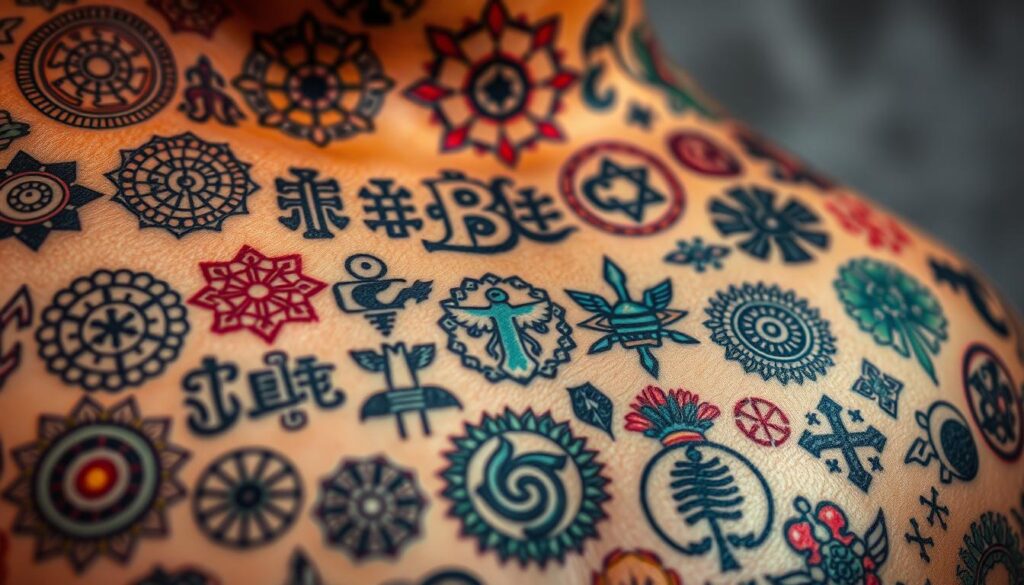
Traditional Color Meanings in Tattoo Culture
Different colors in tattoo art carry distinct meanings. For instance, red symbolizes passion and love, but can also represent courage or sacrifice, depending on the cultural context. Blue is often associated with calmness and loyalty in Western cultures, while in Japanese tattooing, it may signify water or specific deities. Green represents growth and renewal, making it a popular choice for floral designs.
- Black, while not a color, represents strength and elegance.
- Yellow and orange bring energy and optimism to tattoo designs.
- Purple traditionally symbolizes royalty and spirituality.
Personal Interpretations and Cultural Variations
Beyond traditional meanings, individuals often assign personal significance to colors based on their experiences. Cultural variations also play a significant role, as the same color can have different meanings in different cultures. Understanding these nuances is crucial for creating tattoo designs with deeper meaning and intentionality.
By considering both traditional symbolism and personal interpretations, tattoo artists and enthusiasts can create designs that are not only visually striking but also rich in meaning.
Popular Color Tattoo Styles and Designs
The art of color tattooing encompasses a broad spectrum of styles, each with its unique characteristics and appeal. With the advancement in tattoo ink technology, color tattoos have gained immense popularity, showcasing a variety of styles and designs that cater to different tastes and preferences.
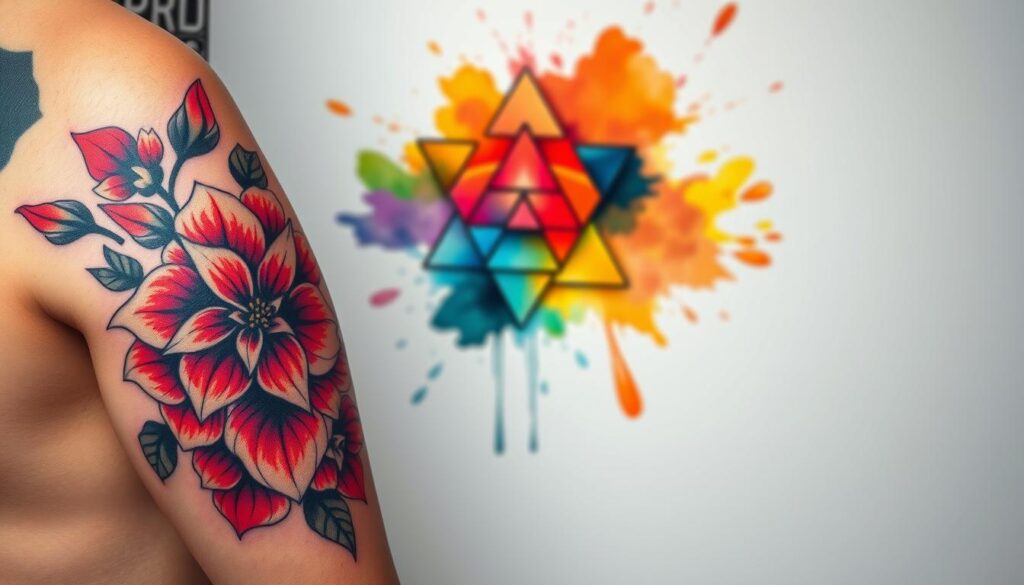
Traditional and Neo-Traditional Color Work
Traditional American tattoo style, often referred to as “Old School,” features bold black outlines with vibrant, limited color palettes of red, green, yellow, and blue. These iconic designs have stood the test of time. Neo-traditional style builds upon these foundations but incorporates a broader color spectrum and more detailed illustrative techniques while maintaining characteristic bold outlines.
Watercolor Tattoo Techniques
Watercolor tattoo techniques create fluid, painterly effects that mimic the translucent quality of watercolor paintings. This style often uses soft color blending without heavy black outlines, resulting in a delicate and dreamy appearance. As noted by tattoo artists, “Watercolor tattoos require a skilled hand to achieve the desired soft, blended look.”
Japanese-Style Color Tattooing
Japanese-style tattooing, known as Irezumi, employs specific color combinations with cultural significance. Typically, it features black outlines with carefully applied color washes that follow traditional motifs and rules, creating a harmonious balance of color and design.
Realistic Color Portraits and Imagery
Realistic color portrait tattoos require exceptional technical skill from tattoo artists who must understand both color theory and anatomy to create photorealistic renderings on skin. These tattoos are highly detailed and can capture the subtleties of human expression and emotion.
For more inspiration on beautiful tattoos, you can visit https://nailcutandink.com/beautiful-tattoos/. Popular color tattoo designs include floral arrangements, animal portraits, landscape scenes, and fantasy elements that showcase the full potential of color work. Each color tattoo style has different considerations for longevity, with some techniques potentially requiring more touch-ups over time.
Color Tattoos on Different Skin Tones
The visibility and vibrancy of color tattoos vary across different skin tones. This variation is due to the interaction between the tattoo ink and the skin’s natural pigment, melanin.
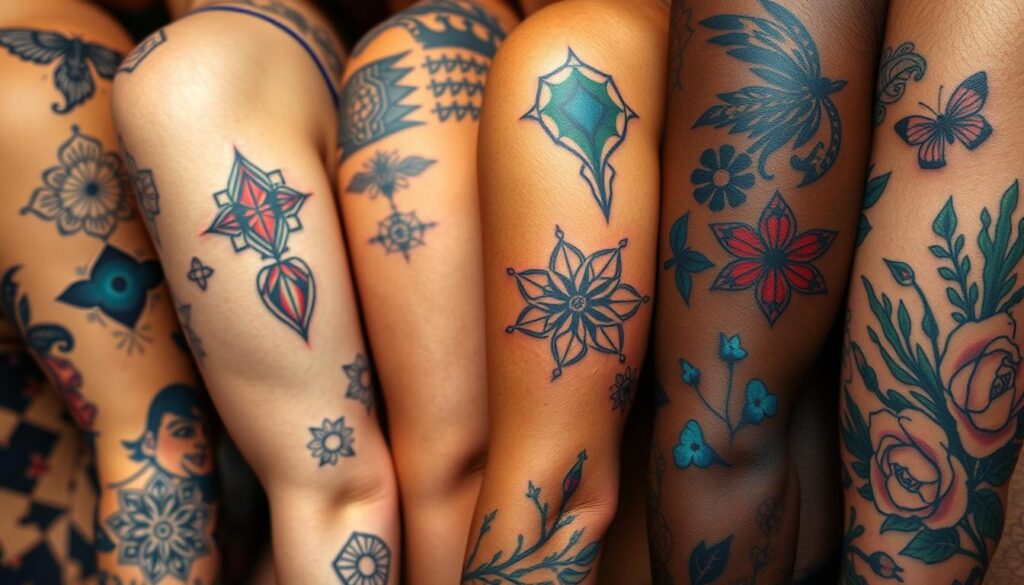
How Melanin Affects Color Visibility
Melanin acts as a filter that affects how tattoo colors appear on the skin. The amount of melanin in the skin determines its tone, and this, in turn, influences the visibility of tattoo ink. Generally, the more melanin present, the darker the skin tone, and the more it can impact the appearance of certain colors.
For instance, lighter skin tones can display a wide range of colors vividly because there’s less melanin to interfere with the ink. In contrast, darker skin tones may not show certain colors as vibrantly, particularly those that are darker or more muted.
Best Color Choices for Darker Skin
For individuals with darker skin tones, certain colors tend to stand out more than others. Colors like red, orange, and some greens are often more visible because they create a stronger contrast against the skin’s natural undertones.
- Red and orange hues are particularly vibrant on darker skin.
- Certain greens can also appear more pronounced.
- It’s best to avoid colors that are too similar to the skin tone.
Consulting with a tattoo artist who has experience with color work on diverse skin tones is crucial. They can help determine the best colors that will complement the individual’s skin tone.
Color Theory in Tattooing Diverse Skin
Understanding color theory is essential for tattoo artists working with diverse skin tones. The natural undertones of the skin interact with the tattoo pigments, affecting their final appearance.
Artists must consider the color wheel and how different hues interact with the skin’s undertones. For example, blues and purples may appear muted on darker skin because they are closer to brown on the color wheel, resulting in less contrast.
For more information on the intricacies of tattooing and color theory, you might be interested in learning about tattoo removal, which also involves understanding skin and ink interaction.
Color vs. Black and Gray: Making Your Choice
Whether you’re drawn to the bold statement of color tattoos or the subtle sophistication of black and gray work, understanding the differences between these two styles is essential. The choice between color and black and gray tattoos represents one of the most fundamental decisions in tattoo design, with each option offering distinct aesthetic qualities and practical considerations.
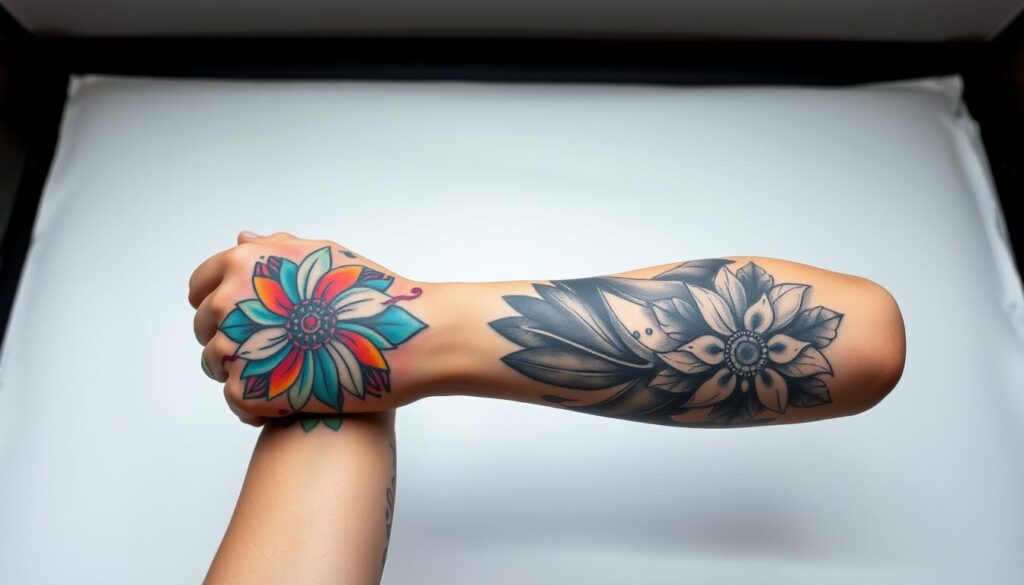
Pros and Cons of Color Tattoos
Color tattoos provide vibrancy and visual impact that can make designs pop, allowing for more realistic representation of subjects like portraits, landscapes, and flora. However, color ink typically requires more maintenance than black ink, with many color tattoos needing touch-ups more frequently to maintain their vibrancy over time. Additionally, color tattoos may present more risk of allergic reactions, as color inks contain more complex chemical compounds than basic black ink. For more information on black tattoos, you can visit our related article.
Advantages of Black and Gray Work
Black and gray work offers timeless elegance that transcends trends, with the contrast between black ink and skin creating depth through shading rather than color variation. Black ink generally shows up more consistently across all skin tones and tends to hold its definition longer than colored inks, making it a practical choice for long-term wear. Moreover, black and gray tattoos often age more gracefully, maintaining their legibility and impact even as they naturally fade over decades.
Ultimately, the choice between color and black and gray tattoos depends on your personal style, the design you have in mind, and your willingness to commit to maintenance. By understanding the pros and cons of each, you can make an informed decision that suits your preferences and ensures you’re happy with your tattoo for years to come.
Practical Considerations for Getting a Color Tattoo
Before committing to a color tattoo, it’s essential to understand the practical implications. Getting a color tattoo is a significant decision that involves several factors beyond just the design.
Cost and Time Investment
The cost of a color tattoo can be substantial due to the complexity and detail involved. Color tattoos typically cost more than black and gray work because they require more time, skill, and materials. Artists often charge higher rates for complex color pieces, and the need for potential touch-ups over time can add to the overall cost.
| Factors Affecting Cost | Description | Impact on Overall Cost |
|---|---|---|
| Size and Complexity | Larger and more complex designs require more time and ink. | Higher cost due to increased time and materials. |
| Artist’s Experience | More experienced artists charge higher rates. | Higher cost for expertise. |
| Touch-ups and Maintenance | Color tattoos may require more frequent touch-ups. | Additional cost over time. |
Pain Levels and Healing Process
The healing process for color tattoos can be more intensive compared to black and gray tattoos. The skin needs to incorporate multiple ink pigments, which can lead to more pronounced scabbing and longer healing times. Pain levels can vary, with some individuals reporting that certain color inks feel more intense during application.
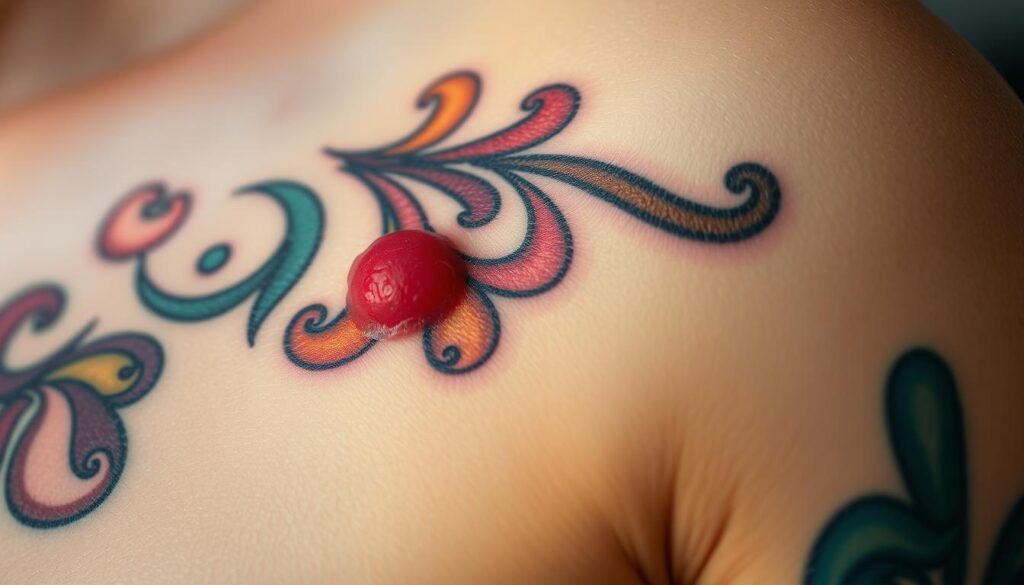
Finding the Right Artist for Color Work
Finding the right tattoo artist for color work is crucial. It’s essential to review portfolios that showcase healed color tattoos, as colors can change significantly during the healing process. An experienced artist understands how colors will heal and can adjust their technique accordingly, ensuring the best possible outcome for your color tattoo.
When getting a color tattoo, consider the placement carefully, as areas with thin skin or frequent sun exposure may experience more color fading over time. Consultation with your tattoo artist should include discussion about how specific tattoo ink colors will interact with your skin tone and how they might age over time.
Maintaining the Vibrancy of Your Color Tattoo
Color tattoos can be a stunning form of self-expression, but they require specific care to maintain their vibrancy. The initial healing process and subsequent care play a significant role in preserving the color saturation of your tattoo.
Aftercare Specifics for Color Ink
Proper aftercare is essential for maintaining the vibrancy of color tattoos. During the initial healing process, it’s crucial to keep the area clean and moisturized without oversaturating the skin, which can cause the ink to be drawn out. For more detailed information on the healing process, you can visit this resource. The healing process typically involves gentle washing and applying a recommended aftercare cream. It’s also important to avoid direct sunlight and extreme temperatures during this period.
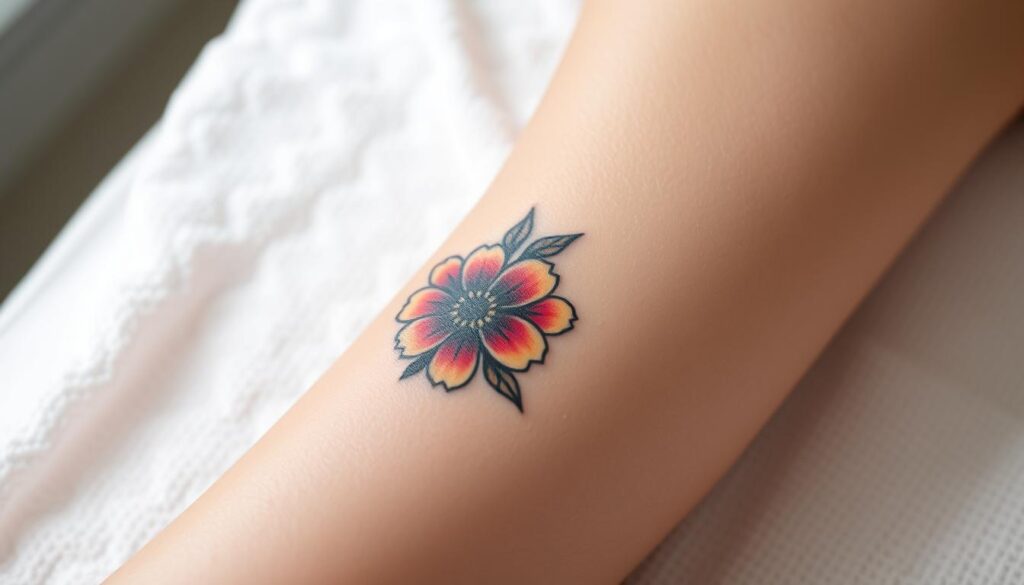
Sun Protection and Long-Term Preservation
Sun exposure is a significant threat to the vibrancy of color tattoos. UV rays can break down tattoo ink over time, causing fading. To mitigate this effect, it’s essential to apply a broad-spectrum sunscreen with a minimum SPF of 30 whenever your tattoo is exposed to sunlight, even on cloudy days. Long-term preservation also involves considering your lifestyle – for instance, if you spend a lot of time outdoors or are frequently in the water, you may need to take extra precautions to protect your tattoo. Maintaining overall skin health through hydration, balanced nutrition, and avoiding smoking can also positively impact how well your color tattoo ages.
Conclusion: Embracing the Colorful Journey of Tattoo Art
In the realm of tattoo art, color plays a pivotal role in creating visually striking and emotionally resonant designs that tell personal stories. Color tattoos represent a deeply personal journey of self-expression, with each piece telling a unique story through its design, placement, and color choices. As tattoo ink technology continues to advance, the possibilities for color expression in tattoo art expand, offering more options for collectors of all skin tones.
The decision to get a color tattoo involves weighing aesthetic preferences against practical considerations. Finding the right balance between artistic vision and practical execution is key to a successful tattoo experience. As you consider your own color tattoo journey, remember that the best designs honor both artistic traditions and personal meaning, creating something truly unique to your experience.
Ultimately, tattoos, especially those in color, showcase the living, evolving nature of tattoo art, changing subtly with time while remaining a permanent marker of personal history on our most personal canvas – our skin.
